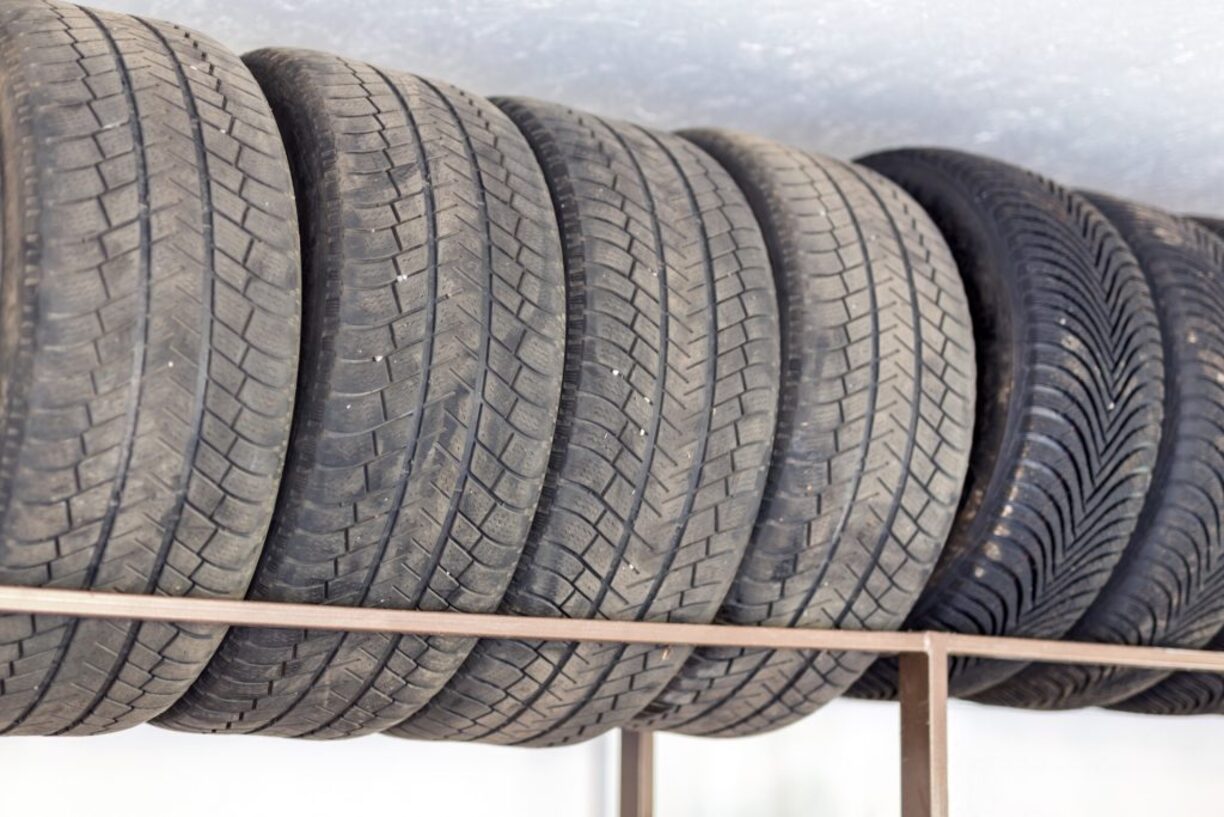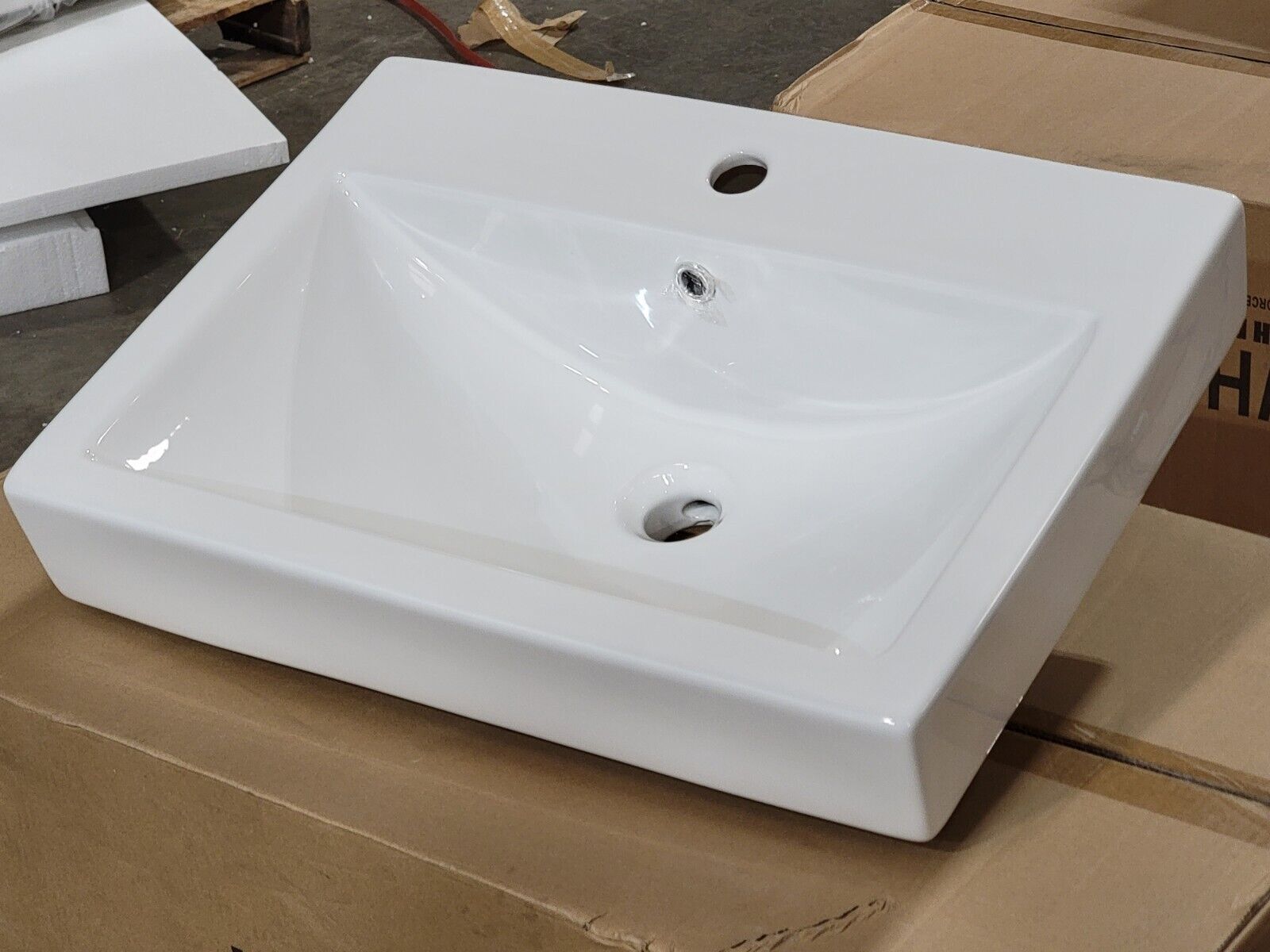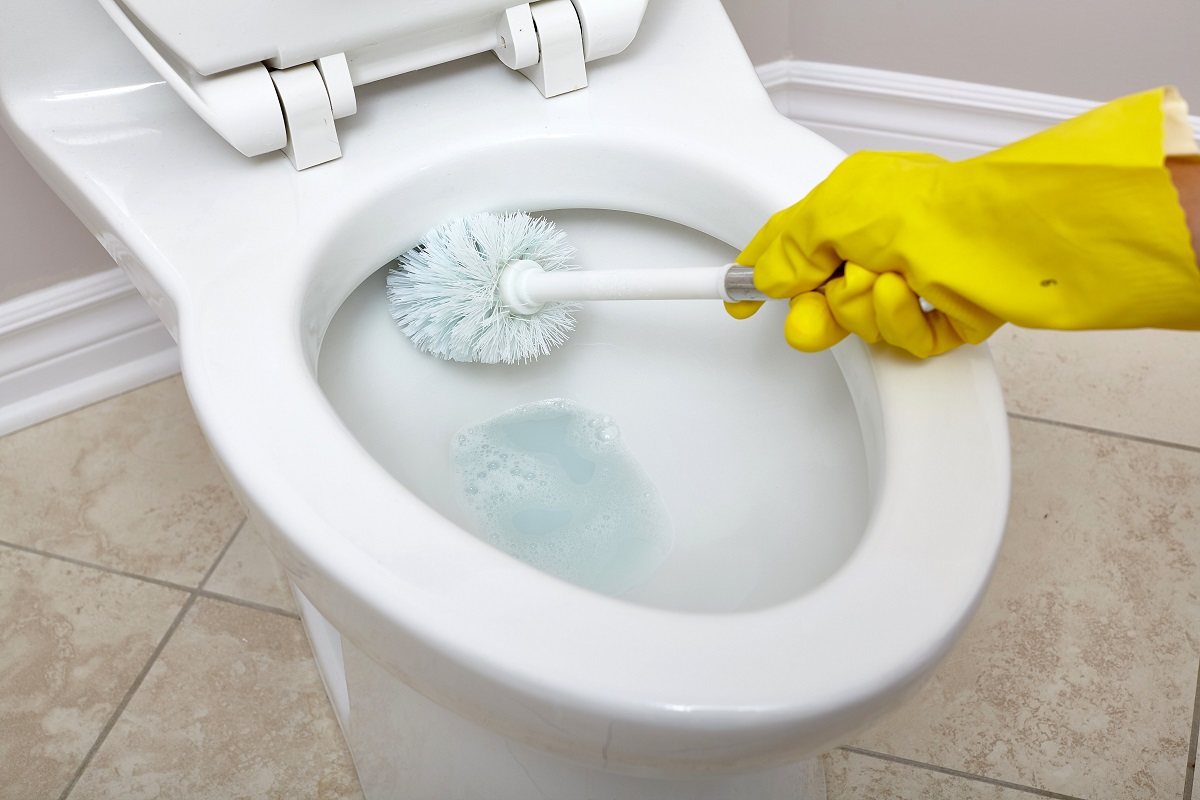

Articles
How To Store Rims
Modified: January 6, 2024
Learn the best storage techniques for rims with our informative articles. Find out how to protect your rims from damage and keep them in top condition.
(Many of the links in this article redirect to a specific reviewed product. Your purchase of these products through affiliate links helps to generate commission for Storables.com, at no extra cost. Learn more)
Introduction
When it comes to maintaining the condition and performance of your rims, proper storage is key. Whether you’re a car enthusiast, a professional mechanic, or simply someone who wants to keep their rims in pristine condition, knowing how to store them correctly can prevent damage and extend their lifespan.
Improper rim storage can lead to a variety of issues, such as scratches, corrosion, and even structural damage. This can not only impact the appearance of your rims but also compromise their functionality and safety. By understanding the importance of proper rim storage and following some essential practices, you can ensure that your rims stay in optimal condition when they’re not in use.
Key Takeaways:
- Proper rim storage is essential to prevent damage, corrosion, and warping. Select the right storage location, containers, and maintenance practices to ensure your rims stay in optimal condition for long-term use.
- Regularly monitor tire pressure, protect against theft, and rotate rims for long-term storage. By following these tips, you can preserve the appearance and performance of your rims, ensuring they’re ready for use when needed.
Read more: How To Store Tires Without Rims
Importance of Proper Rim Storage
Proper rim storage is crucial to maintain the integrity and longevity of your rims. Here are some key reasons why it is important:
- Prevent Damage: Storing your rims correctly can protect them from scratches, dents, and other physical damage. By keeping them safely stored, you reduce the risk of accidental mishaps that can occur when rims are left exposed or stacked haphazardly.
- Prevent Corrosion: Rims are often exposed to moisture, dirt, and other environmental factors that can cause corrosion. By storing them properly, you can minimize the exposure to these elements and reduce the likelihood of rust formation that can compromise the structural integrity and appearance of your rims.
- Preserve Appearance: Rims are not only functional but also contribute to the overall aesthetics of your vehicle. Proper storage helps maintain their original shine and finish. By protecting them from dust, debris, and sunlight, you can prevent fading and discoloration over time.
- Ensure Proper Fitment: Storing rims incorrectly, especially if they’re stacked or placed under pressure, can cause warping or distortion. This can lead to issues with fitment when you reinstall them on your vehicle, compromising the balance and performance of your tires.
- Save Space and Organize: Properly stored rims take up less space and can be organized more efficiently. This is especially important for professionals who deal with multiple sets of rims and need to maximize their storage capacity.
By understanding the importance of proper rim storage, you can ensure that your investment in rims is protected and that they continue to perform optimally whenever you need them.
Selecting the Ideal Storage Location
Choosing the right storage location for your rims is essential to ensure their safety and longevity. Here are some factors to consider when selecting the ideal storage location:
- Indoor vs. Outdoor: Whenever possible, opt for indoor storage to protect your rims from the elements. Indoor storage helps shield them from direct sunlight, rain, snow, and extreme temperature fluctuations that can damage the finish and structure of your rims.
- Climate-Controlled Environment: If you live in an area with high humidity or extreme temperature variations, consider storing your rims in a climate-controlled environment. This helps maintain a stable temperature and humidity level, minimizing the risk of moisture buildup and corrosion.
- Clean and Dry Space: Ensure that the storage location is clean and dry to prevent the accumulation of dust, dirt, and moisture. Remove any debris or sharp objects that may cause scratches or punctures to your rims.
- Well-Ventilated Area: Good air circulation is important to prevent the buildup of moisture and reduce the risk of mildew or mold growth. If you’re storing your rims in a confined space, consider using a dehumidifier or moisture-absorbing products.
- Away from Chemicals: Keep your rims away from harsh chemicals, solvents, and petroleum-based products, as they can cause damage to the finish and material of your rims. Store them in a location where they won’t be exposed to potential spills or leaks.
- Security: Choose a secure storage location to protect your rims from theft and unauthorized access. If storing your rims in a shared space, consider using locking mechanisms or security cameras for added peace of mind.
By considering these factors, you can select an ideal storage location that will help preserve the condition and performance of your rims for years to come.
Cleaning and Preparing Rims for Storage
Before storing your rims, it is important to clean and prepare them properly to prevent any damage or issues during storage. Here are some steps to follow:
- Remove Any Dirt and Debris: Start by thoroughly cleaning your rims with a gentle soap or rim cleaner. Use a soft brush or sponge to remove any dirt, brake dust, or other debris. Pay close attention to hard-to-reach areas and crevices.
- Inspect for Damage: Examine your rims for any signs of damage, such as scratches, dents, or bends. Repair any minor issues before storing to prevent further damage.
- Dry Thoroughly: After cleaning, make sure to dry your rims completely to prevent any moisture from being trapped during storage. Use a clean microfiber cloth or allow them to air dry in a well-ventilated area.
- Apply a Protective Coating: Consider applying a rim sealant or wax to provide a layer of protection against corrosion and damage. This can help maintain the finish and prevent any contaminants from adhering to the rims during storage.
- Remove Tires (Optional): If you prefer, you can remove the tires from the rims before storage. This can help save space and prevent any pressure or stress on the tires during long-term storage. Make sure to store the tires properly in a separate location.
- Label and Document: It’s a good practice to label your rims or create an inventory list that indicates the make, model, size, and any other relevant information about each set of rims. This will make it easier to locate specific rims when needed.
By cleaning and preparing your rims before storage, you’ll ensure that they remain in optimal condition and are ready to be used when you retrieve them.
Choosing the Right Storage Containers
When it comes to storing your rims, selecting the right storage containers is essential for their protection and organization. Here are some key factors to consider when choosing the ideal storage containers:
- Material: Opt for storage containers made of durable materials such as plastic or metal. These materials provide adequate protection against impacts and help prevent moisture from seeping in.
- Size and Capacity: Ensure that the storage containers are large enough to accommodate your rims comfortably. Consider the size and width of your rims, along with any additional accessories such as center caps or tire pressure sensors.
- Stackability: Look for containers that are designed to be stackable. This will help maximize your storage space, especially if you have multiple sets of rims that need to be stored.
- Lid Seal: Select containers with tightly sealed lids to keep out dust, moisture, and pests. A good seal will help maintain the condition of your rims and reduce the risk of corrosion or damage.
- Padded Interior: Consider containers that have a padded or lined interior to provide an extra layer of protection against scratches and impacts. This is especially important if you plan to stack multiple rims within the same container.
- Handles and Wheels: Choose containers with sturdy handles and, if possible, wheels for easy transportation and maneuverability. This will make it convenient to move your rims from one location to another without straining yourself.
- Clear Labeling: It’s helpful to have storage containers with clear labeling or the ability to attach labels. This allows you to easily identify the contents of each container, making it more efficient to locate specific sets of rims when needed.
By choosing the right storage containers, you can ensure that your rims are well-protected, organized, and easily accessible whenever you need them.
Read more: How To Store Rims Without Tires
Storing Rims Vertically or Horizontally?
When it comes to storing your rims, you may wonder whether it is better to store them vertically or horizontally. Both methods have their advantages and considerations, so let’s explore each option:
Vertically:
- Storing rims vertically can help save space, especially if you have limited storage area. By using wall-mounted racks or specialized hooks, you can hang the rims vertically, making efficient use of vertical space.
- Vertical storage can also prevent any possible warping or distortion that can occur when rims are stacked horizontally under pressure. This is especially important for lightweight or fragile rims.
- However, when storing rims vertically, it is essential to make sure they are adequately supported and secured to prevent any accidental falls or damage. Ensure that the hooks or racks are sturdy and can bear the weight of the rims.
Horizontally:
- Storing rims horizontally, especially in storage containers or racks, provides more stability and protection. The rims can be nested or placed side by side, preventing any potential bending or warping.
- Horizontal storage also allows for easier access and organization. You can easily identify and retrieve the specific set of rims you need without having to remove multiple rims stacked on top of each other.
- When storing rims horizontally, ensure that they are well-padded or separated to prevent any contact or friction that could lead to scratching or damage to the finish.
The best approach will depend on your available space, the type of rims you have, and your personal preference. If space is limited, consider vertical storage with proper support. If you have sufficient space and prioritize easy access, horizontal storage may be more suitable.
Regardless of whether you choose vertical or horizontal storage, remember to place a barrier, such as a protective cover or foam padding, between the rims to prevent any metal-on-metal contact that can lead to scratches or damage.
Ultimately, the goal is to store your rims in a way that protects them from damage, provides easy access, and maximizes the use of storage space.
When storing rims, make sure to clean and dry them thoroughly to prevent corrosion. Store them in a cool, dry place away from direct sunlight and moisture. Consider using tire storage bags to protect them from dust and scratches.
Inspecting Rims Before and After Storage
Inspecting your rims before and after storage is essential to ensure their condition and identify any potential issues that may have arisen. Here’s why you should conduct inspections and the steps to follow:
Before Storage:
- Check for Damage: Thoroughly inspect each rim for any signs of damage, such as scratches, dents, or cracks. Address any issues before storing the rims to prevent further damage.
- Verify Tire Pressure: If you have stored your rims with tires attached, ensure that the tire pressure is at the recommended level. Proper tire pressure prevents flat spots and maintains tire integrity.
- Inspect Valve Stems and Caps: Check the valve stems and caps for any damage or leaks. Replace any damaged components to prevent air loss or contamination during storage.
- Remove Any Foreign Objects: Make sure to remove any debris or objects that may have become lodged in the rims during storage. This includes leaves, twigs, or other materials that can potentially cause imbalance or damage to the rims or tires.
After Storage:
- Clean the Rims: Before reinstallation, clean the rims thoroughly to remove any accumulated dust or dirt. This ensures proper fitment and prevents debris from affecting the balance or performance of the tires.
- Inspect for Damages: Once the rims are clean, carefully inspect them for any signs of damage that may have occurred during storage. Check for scratches, corrosion, or any other issues. Address any concerns promptly.
- Check Tire Pressure: If the tires were stored separately, check the tire pressure before mounting them onto the rims. Inflate them to the recommended level for optimal performance.
- Verify Fitment: Before installing the rims, ensure they are the correct size and fit for your vehicle. Improper fitment can lead to vibration, handling issues, and potential damage.
By conducting thorough inspections before and after storage, you can catch any potential issues early on and address them promptly. This ensures that your rims are in good condition, properly maintained, and ready to be used without any complications.
Protecting Rims from Damage
Protecting your rims from damage is crucial to maintain their appearance and performance. Here are some effective ways to safeguard your rims:
- Use Protective Covers: Consider using protective covers specifically designed for rims. These covers provide a barrier against dust, scratches, and other potential damages, especially during storage or when transporting the rims.
- Avoid Curb Rash: Be cautious when parking your vehicle to avoid curb rash, which occurs when the rims scrape against curbs. Practice careful parking and consider using curb ramps or wheel chocks to avoid accidental contact.
- Mindful Wheel Cleaning: When cleaning your rims, use gentle cleaning products and avoid abrasive brushes or cleaning tools that can scratch the surface. Opt for soft microfiber cloths or brushes specifically designed for rims to minimize the risk of damage.
- Be Wary of Chemicals: Avoid using harsh chemicals or cleaning products that can damage the finish or material of your rims. Check the manufacturer’s guidelines for recommended cleaning products and techniques.
- Regular Tire Rotations: Implement regular tire rotations to distribute the weight evenly across all four rims. This helps reduce the risk of uneven wear and potential damage to individual rims.
- Avoid Harsh Road Conditions: Whenever possible, avoid driving on roads with potholes, sharp debris, or other hazards that can cause damage to your rims. If you encounter unavoidable road conditions, drive cautiously and maintain a safe distance from hazardous objects.
- Protect Against Theft: Install locking lug nuts or anti-theft devices to deter potential thieves from stealing your rims. You can also consider parking in well-lit areas or utilizing a security system for added protection.
By implementing these protective measures, you can significantly reduce the risk of damage to your rims and ensure their long-lasting beauty and performance.
Monitoring Tire Pressure During Storage
Monitoring tire pressure during storage is essential to preserve the integrity and performance of your rims and tires. Here’s why it’s important and how to properly monitor tire pressure:
When vehicles sit idle for extended periods, such as during long-term storage, the air pressure in the tires can gradually decrease. This decrease in tire pressure can lead to several issues, including:
- Tire Damage: Insufficient tire pressure can cause the tires to develop flat spots or distortions, especially if the weight of the vehicle isn’t evenly distributed across all four tires.
- Premature Wear: Underinflated tires can wear unevenly, resulting in reduced tread life. This can lead to the need for premature tire replacement.
- Handling and Stability Problems: Improperly inflated tires can negatively affect the vehicle’s handling, stability, and overall performance. This poses a safety risk when the vehicle is back on the road.
To avoid these issues, it’s important to regularly monitor and maintain the tire pressure during storage. Here are some steps to follow:
- Check Initial Tire Pressure: Before storing your vehicle, ensure that the tires are properly inflated to the manufacturer’s recommended levels. Consult the vehicle owner’s manual or the label on the driver’s side door jamb for the correct tire pressure.
- Use Valve Stem Caps: Place valve stem caps on each tire to prevent any air leakage or contamination during storage. Ensure that the caps are securely tightened.
- Regularly Inspect and Reinflate: Depending on the storage duration, check the tire pressure at least once every month and reinflate as necessary to the recommended levels. Use a reliable tire pressure gauge to get accurate readings.
- Store Vehicle on Even Surface: If possible, store the vehicle on a level surface to distribute the weight evenly across all four tires. This helps prevent flat spots and ensures consistent tire pressure.
- Rotate Tires Periodically: If storing your vehicle for an extended period, consider rotating the tires periodically. This helps prevent flat spots and promotes even tread wear.
It’s important to note that tire pressure can drop due to temperature fluctuations. Therefore, monitoring the tire pressure during storage becomes even more crucial in areas with significant temperature changes.
By consistently monitoring and maintaining the proper tire pressure during storage, you can prevent potential tire damage, ensure optimal performance, and reduce the risk of safety issues when you’re ready to drive your vehicle again.
Read more: How To Rim A Glass With Salt
Tips for Long-Term Rim Storage
Long-term rim storage requires special attention to ensure the condition and performance of your rims are preserved. Here are some valuable tips to follow:
- Clean and Prepare: Clean your rims thoroughly before storing them. Remove any dirt, debris, or brake dust, and ensure they are completely dry. Apply a protective coating or wax to prevent corrosion during storage.
- Choose the Right Storage Location: Store your rims in a clean, dry, and well-ventilated area. If possible, opt for a climate-controlled environment to prevent extreme temperature fluctuations that can damage your rims.
- Use Proper Storage Containers: Select durable storage containers that provide adequate protection. Ensure the containers have a tight lid seal to keep out dust, moisture, and pests. Consider using individual protective covers for each rim for added protection.
- Store Vertically or Horizontally: Choose the storage method that works best for your space and rims. If storing vertically, make sure the rims are properly supported and secured. If storing horizontally, use padding or separate the rims to avoid friction.
- Inspect Before and After Storage: Thoroughly inspect your rims for damage before and after storage. Address any issues promptly to prevent further damage or complications.
- Monitor Tire Pressure: Regularly check and maintain the proper tire pressure during storage to prevent flat spots and distortion. Use a reliable tire pressure gauge for accurate readings.
- Rotate Rims: If storing multiple sets of rims, consider rotating them periodically to distribute the weight evenly and prevent flat spots. This is especially important for long-term storage.
- Protect from Theft: Use locking lug nuts or anti-theft devices to deter theft. Park your vehicle in secure areas or consider additional security measures like a surveillance system.
- Label and Organize: Keep your rims organized by labeling storage containers or maintaining an inventory list. This makes it easier to locate specific rims when needed without unnecessary handling or searching.
- Regular Maintenance: Even in storage, conduct routine maintenance on your rims. Check for any signs of damage, including corrosion or paint chipping, and address them promptly to preserve their condition.
Following these tips will help ensure that your rims remain in excellent condition during long-term storage and are ready for use whenever you need them.
Conclusion
Proper rim storage is crucial to maintaining the condition, performance, and longevity of your rims. By adhering to the right practices, you can protect your investment and ensure that your rims stay in optimal condition when they are not in use.
Throughout this article, we have highlighted the importance of proper rim storage and provided valuable tips to help you store your rims effectively.
From selecting the ideal storage location to choosing the right storage containers, each step plays a significant role in safeguarding your rims. Cleaning and preparing your rims before storage, inspecting them before and after storage, and monitoring tire pressure are vital aspects of maintenance.
Moreover, protecting your rims from damage and theft, as well as rotating your rims periodically, are essential practices to follow for long-term storage.
By following these guidelines, you can prevent damage, corrosion, and other issues that can compromise the appearance and integrity of your rims. With proper storage, you ensure that your rims are ready to perform at their best when they are put back into use on your vehicle.
Remember, regular maintenance and care are key to preserving the beauty and functionality of your rims. Stay proactive in inspecting, cleaning, and maintaining your rims to ensure they withstand the test of time.
In conclusion, by implementing these practices, you can enjoy the benefits of well-preserved rims that enhance the overall aesthetics and performance of your vehicle.
Frequently Asked Questions about How To Store Rims
Was this page helpful?
At Storables.com, we guarantee accurate and reliable information. Our content, validated by Expert Board Contributors, is crafted following stringent Editorial Policies. We're committed to providing you with well-researched, expert-backed insights for all your informational needs.














0 thoughts on “How To Store Rims”